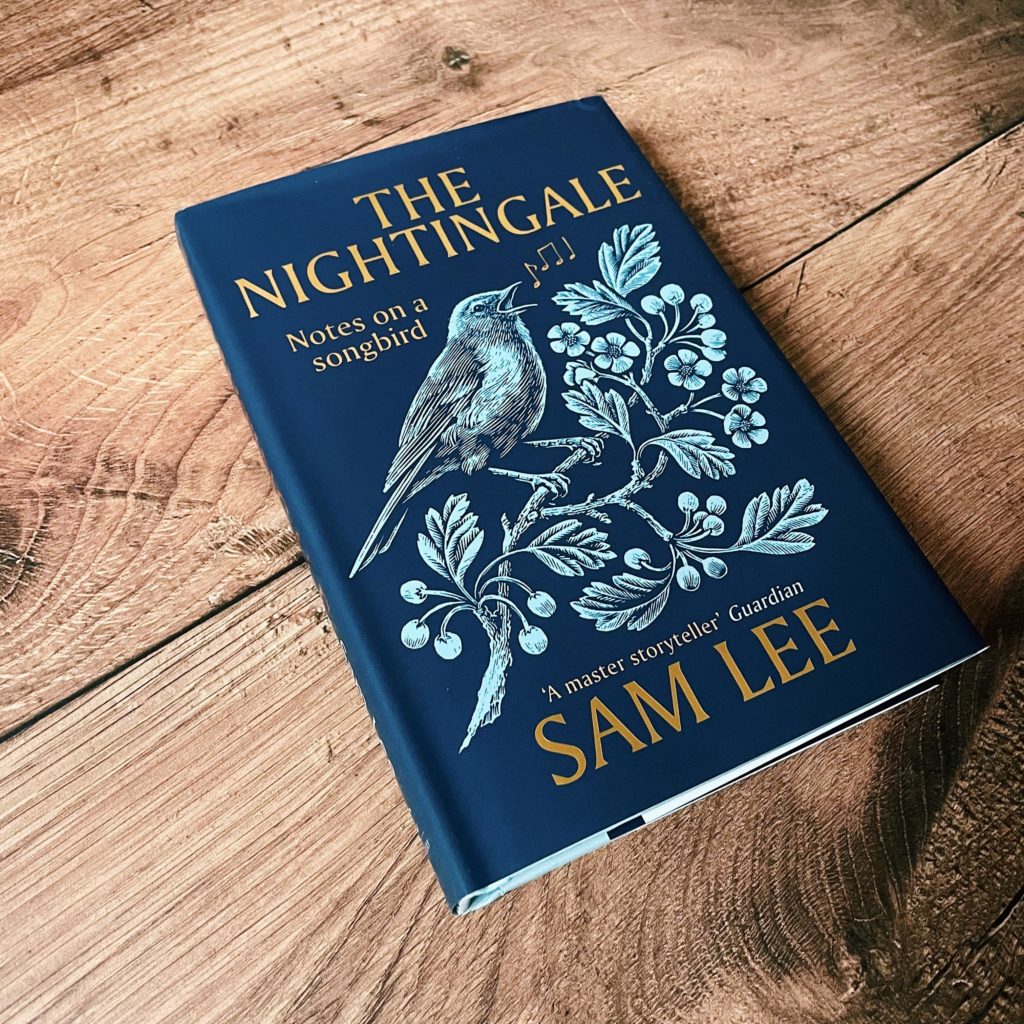Conservationist, musician and folk expert Sam Lee’s new book tells the story of the nightingale — whose sweet song heralds the coming of Spring. David Weir delves in.

For Sam Lee it all began in search of the old songs. Over the past decade and a half, under the wing of torchbearers like Peter Kennedy, Shirley Collins and Stanley Robinson (nephew of Jeannie Robertson) he’s scoured the British Isles recording and imbibing the ancient lore of the remaining Traveller communities. Now as the last source singers depart us, he turns his attention toward a new set of song carriers: The Nightingale. With a population in rapid decline these ‘endlings’ could be one of the most primal connections with the land we have left, as Lee sets out to argue.
Perhaps many won’t have had the fortune of hearing the elusive Philomel in person. Yet curiously the nester’s name still stirs something in our collective imaginations. Famed for its place within folklore, mythology and the Western canon, its influence spans centuries, cultures and continents. Though as poet laureate Simon Armitage recently pointed out, ‘writing effectively a monograph about a bird which has a high position in literature’ is a tall order. Such a renaissance figure surely deserves a similarly versatile biographer. Appropriately then, Lee’s debut book draws on key aspects of his work as an activist, folk music specialist, curator and conservationist, to offer a suitably multi-faceted account of the mercurial songbird.
I first encountered the song of the nightingale during Lee’s radio documentary on Beatrice Harrison, recorded on the ninetieth anniversary of the cellist’s trailblazing avian collaboration, which in 1924 made history as the BBC’s first outdoor broadcast. Nestled in an East Sussex blackthorn thicket, Lee paid tribute to ‘the Lady of the nightingales’ by performing Romany gypsy traditional The Tan Yard Side. Dejan Stojanović once mused, ‘There is no competition of sounds between a nightingale and a violin… Nature is an outcry, unpolished truth’, whereas art is ‘a euphemism – tamed wilderness’. Nevertheless, heard together – the string ensemble pirouetting into a call and response with the songbird, above the steady pulse of shruti box and Lee’s fine-drawn delivery – it spun an otherworldly harmony, hinting at a deep affinity. In that instance of ‘creative symbiosis’ Lee communed with something that would go onto inform all his future endeavours and is the lifeblood of The Nightingale.
All the ornithological details a reader would expect are concisely laid out in the introductory chapters, including compelling insights into the nightingale’s preferred habitats, migratory routes, courtship rituals and capricious behaviours. Lee also explores our unusual co-evolution and imparts thoughtful advice on how and where to find the songbird. However, it’s his personal, often deeply poetic reflections – from leading an XR demonstration in Berkeley Square where attendees streamed birdsong via their phones, to his outpouring of heart when describing his family and friend’s nightingale encounters – that lend this ‘singer’s digest’ its unique charm. Paired with his flair for storytelling, Lee’s words seem to kindle, capturing something of that campfire glow one might find at his Nest Collective events, casting similes like shadow play on the canopy overhead.
The book’s latter half delves into the songster’s ‘intercontinentality’, considering its global influence on art. ‘The nightingale possesses the strange skill of uttering every possible character, tone and temperature imaginable. His song has personality and textural shape all at once’ he explains, aware of the pitfalls in attempting to give body to such a fluid aria. Conscious of how easy it is to also attach our own projections onto the bird, his narrative is never caging. Through use of conflicting adjectives (wistful, garrulous, elegiac, digital) and by including impressions from the world over (from Albanian iso-polyphonic music, Keats and Handel, to Czech lyrics, The Copper Family and Hans Christian Andersen) the nattergal is able to retain his wild, ungovernable spirit.
Lee’s sensibilities echo those of country-dwellers like ‘peasant poet’ John Clare or folk patriarch Bob Copper, individuals who experienced solastalgia and had a profound ‘relationship with the magic of nature and the exquisiteness and potency of the land’. Taking their lead, he applies his knowledge of the oral tradition to bring a refreshingly modern perspective to time-honoured tales, encouraging the need for nature connection, deep listening and preservation. The final chapter deals with these matters directly; listing the ways we can take environmental action, whether from home or out in the field.
We end on a hopeful note. With a brighter future in mind, Lee envisions a spring ritual where people go and ‘do’ a ‘Nightingaler’: his hypothetical ‘English equivalent of a Burns Night’ celebration. This is Lee in his element, demonstrating how imagination and our predilection for art are, ‘the most powerful agent in this campaign of ecological survival’. This sense of possibility and mystical reverence for the natural world permeates each line of prose throughout. Awed, impassioned and empathic, the only question that remains is: will we take heed of The Nightingale’s clarion call?
*
Published by Century, ‘The Nightingale: Notes on a songbird’ is out now and available from your local independent bookshop, or via bookshop.org.
David Weir is a freelance music writer, specialising in folk music and ecomusicology. Follow him on Twitter here.